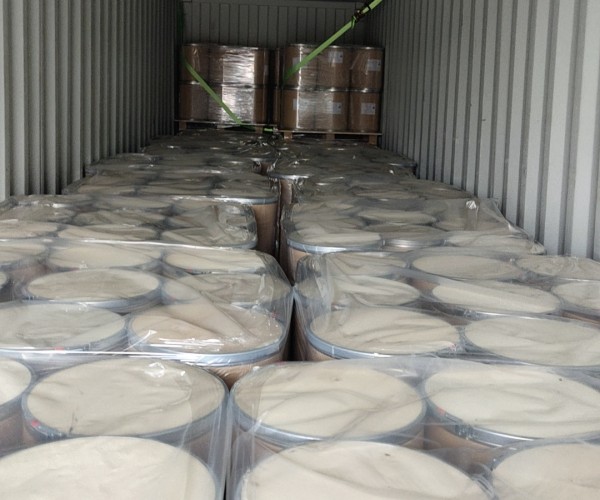Cellulose is a natural polymer composed of glucose units linked together by β(1→4) glycosidic bonds. It is the primary structural component of the cell walls of plants and is one of the most abundant organic materials on Earth. Cellulose, a complex carbohydrate, or polysaccharide, consisting of 3,000 or more glucose units. Healthmove is a high-quality pharmaceutical cellulose powder supplier in China and you can get cellulose powder price here.
Silicified Microcrystalline Cellulose (SMCC) is a co-processed excipient combining microcrystalline cellulose (MCC) with colloidal silicon dioxide (CSD).
Sodium Carboxymethyl Cellulose (CMC-Na) is a water-soluble cellulose derivative obtained by substituting the hydroxyl groups of cellulose with carboxymethyl groups.
Microcrystalline Cellulose (MCC) is a refined, partially depolymerized cellulose derived from natural sources such as wood pulp or cotton.
Low-Substituted Hydroxypropyl Cellulose (L-HPC) is a partially etherified cellulose derivative with a low degree of substitution by hydroxypropyl groups.
Hypromellose Phthalate (HPMCP), also known as Hydroxypropyl Methylcellulose Phthalate, is a cellulose-derived polymer widely used as an enteric coating material in pharmaceutical applications.
Hydroxypropyl Methyl Cellulose (HPMC) is a non-ionic cellulose ether widely used in pharmaceuticals, construction, food, and cosmetics due to its diverse properties.
Hydroxypropyl Cellulose (HPC) is a nonionic, water-soluble cellulose ether derivative. It is widely used in the pharmaceutical, food, and cosmetics industries.
Hypromellose Acetate Succinate (HPMCAS) is a cellulose-derived polymer used extensively in the pharmaceutical industry, primarily as an enteric coating agent and a solubility enhancer for poorly water-soluble drugs.
Croscarmellose Sodium (CCNa) powder is a highly cross-linked, carboxymethylated derivative of cellulose. It is widely used in the pharmaceutical, food, and cosmetics industries.
Calcium Carboxymethyl Cellulose (CMC-Ca) powder is a derivative of cellulose that belongs to the group of carboxymethyl cellulose salts.

We not only supply existing conventional standard materials, but also work with many cooperative laboratories and co-built laboratories to provide ODM services. These laboratories focus on inspection work and actively develop new demand products, aiming to effectively adapt to the diversified needs of the market and provide customers with more comprehensive and forward-looking services and product support.
Our team has accumulated more than ten years of professional experience in material supply. The company has a number of cooperative and co-built factories to ensure product quality and stable supply. We can offer personalized supply chain solutions based on your specific needs, while achieving rapid delivery of purchased materials, effectively reducing your procurement costs and helping you improve your efficiency.

Powdered cellulose is a fine, white powder derived from plant fibers, primarily wood pulp or cotton. It is used as an excipient in pharmaceuticals, food, and other industries due to its binding, thickening, and stabilizing properties.
Binder: It helps bind ingredients in tablet formulations.
Disintegrant: Assists in the breakdown of tablets when they come into contact with moisture.
Suspending agent: Used in liquid formulations to maintain a uniform suspension.
Fillers/Diluents: Adds bulk to tablets and capsules.
Yes, powdered cellulose is recognized as safe by regulatory authorities like the FDA (Food and Drug Administration) and EFSA (European Food Safety Authority). It is used as a food additive and in pharmaceutical products without known toxic effects, although excessive consumption may cause mild digestive issues in some individuals.
Yes, powdered cellulose is plant-based, making it suitable for vegan diets. It is derived from wood pulp or cotton, which are plant sources.
Powdered cellulose has a high surface area and mild cohesive properties that allow it to effectively bind other ingredients together in tablet formulations, ensuring tablet integrity and stability during storage and handling.
Yes, powdered cellulose is widely used in food products as an additive. It serves various purposes such as:
Fiber supplement: Provides dietary fiber.
Anti-caking agent: Prevents clumping in powdered food products.
Fat replacer: Used to reduce the fat content in low-fat food products.
Powdered cellulose is a fine, unmodified form of cellulose.
Microcrystalline cellulose (MCC) is a more processed form of cellulose where the fibers are broken down to produce smaller, crystalline particles that improve compression and flowability in tablet formulations.
Yes, powdered cellulose is commonly used in dietary supplements as a filler, binder, or disintegrant. It provides a natural and non-caloric substance to aid in the formulation of capsules and tablets.
Yes, powdered cellulose is used in cosmetic formulations like face powders, lotions, and creams due to its absorbent and texturizing properties. It helps improve the product's consistency and ensures a smooth application.
Powdered cellulose is generally considered safe, but excessive intake may cause mild gastrointestinal issues, such as bloating or discomfort. It is important to follow recommended dosages in both food and pharmaceutical products.
Powdered cellulose is composed of cellulose fibers, which are long, linear chains of glucose molecules linked by β-1,4-glycosidic bonds. The structure makes it highly resistant to digestive enzymes, which is why it is often used as a fiber supplement.
Powdered cellulose is manufactured by hydrolyzing raw plant materials like wood pulp or cotton. The process involves breaking down the plant fibers mechanically and chemically to produce a fine powder.
Yes, powdered cellulose is gluten-free and can be used in gluten-free food products and pharmaceuticals as a filler or binder without affecting the product's gluten content.
Copyright © 2023-2024. HealthMove All Rights Reserved.